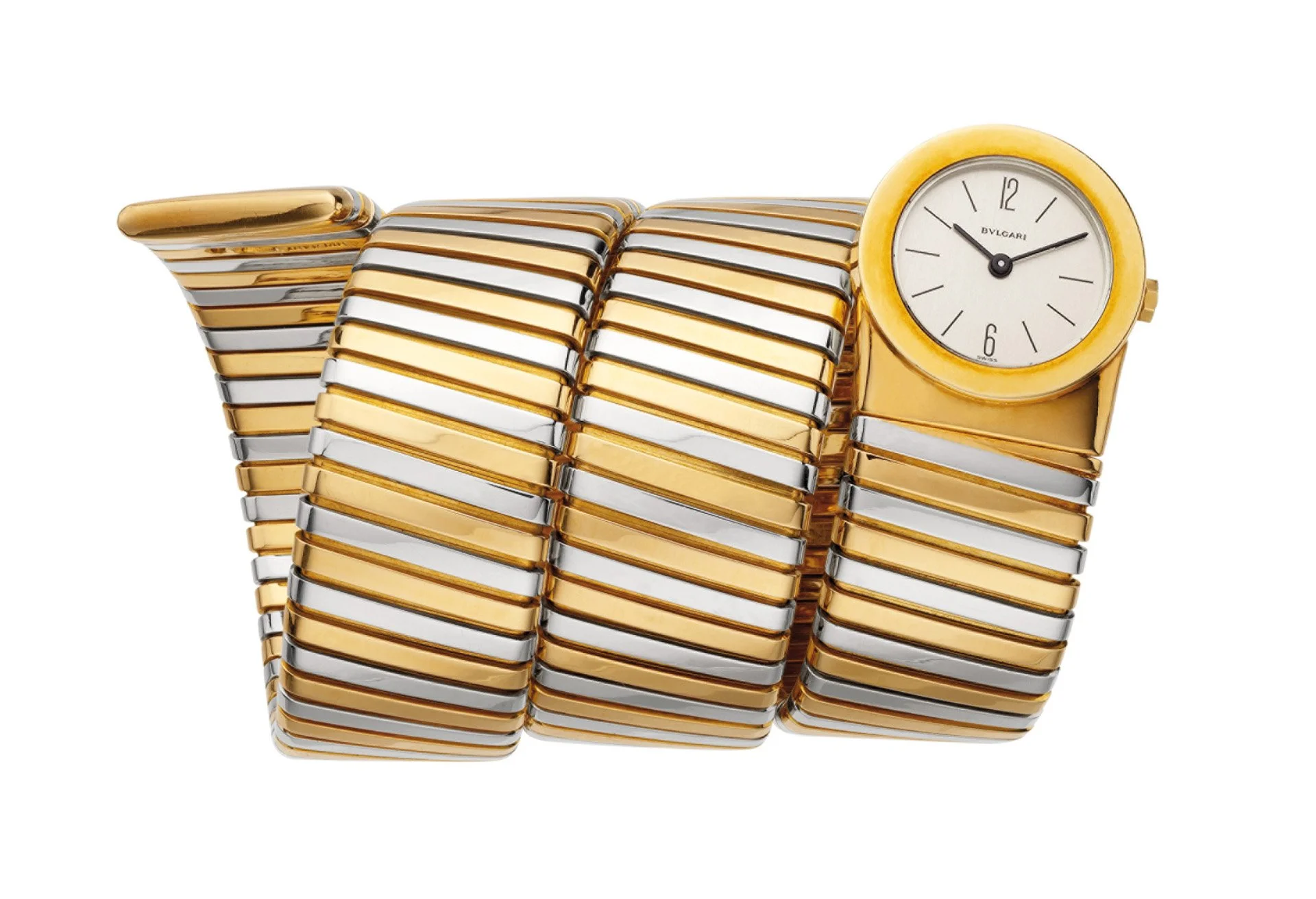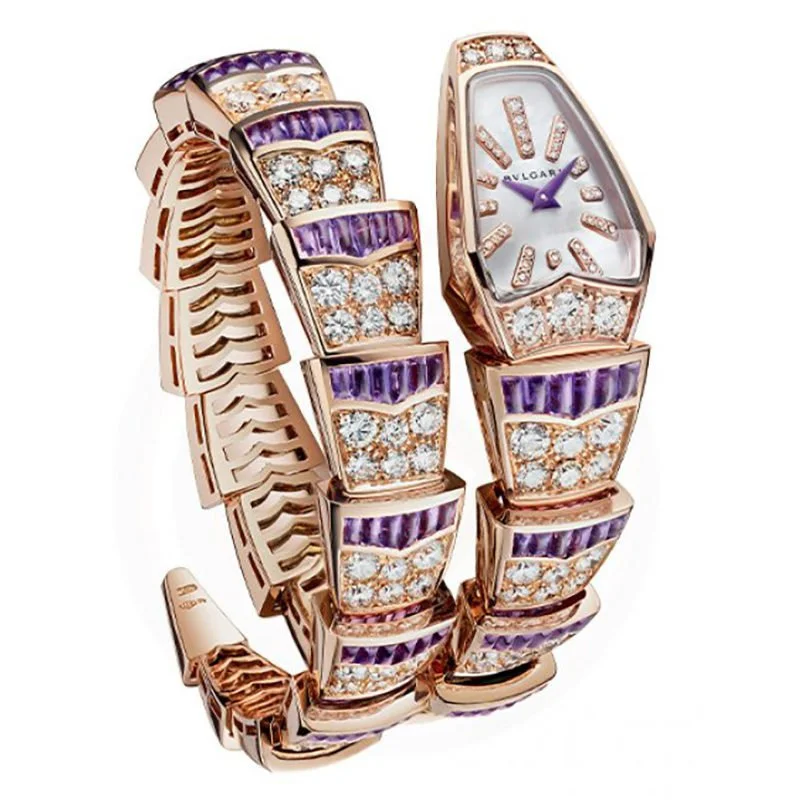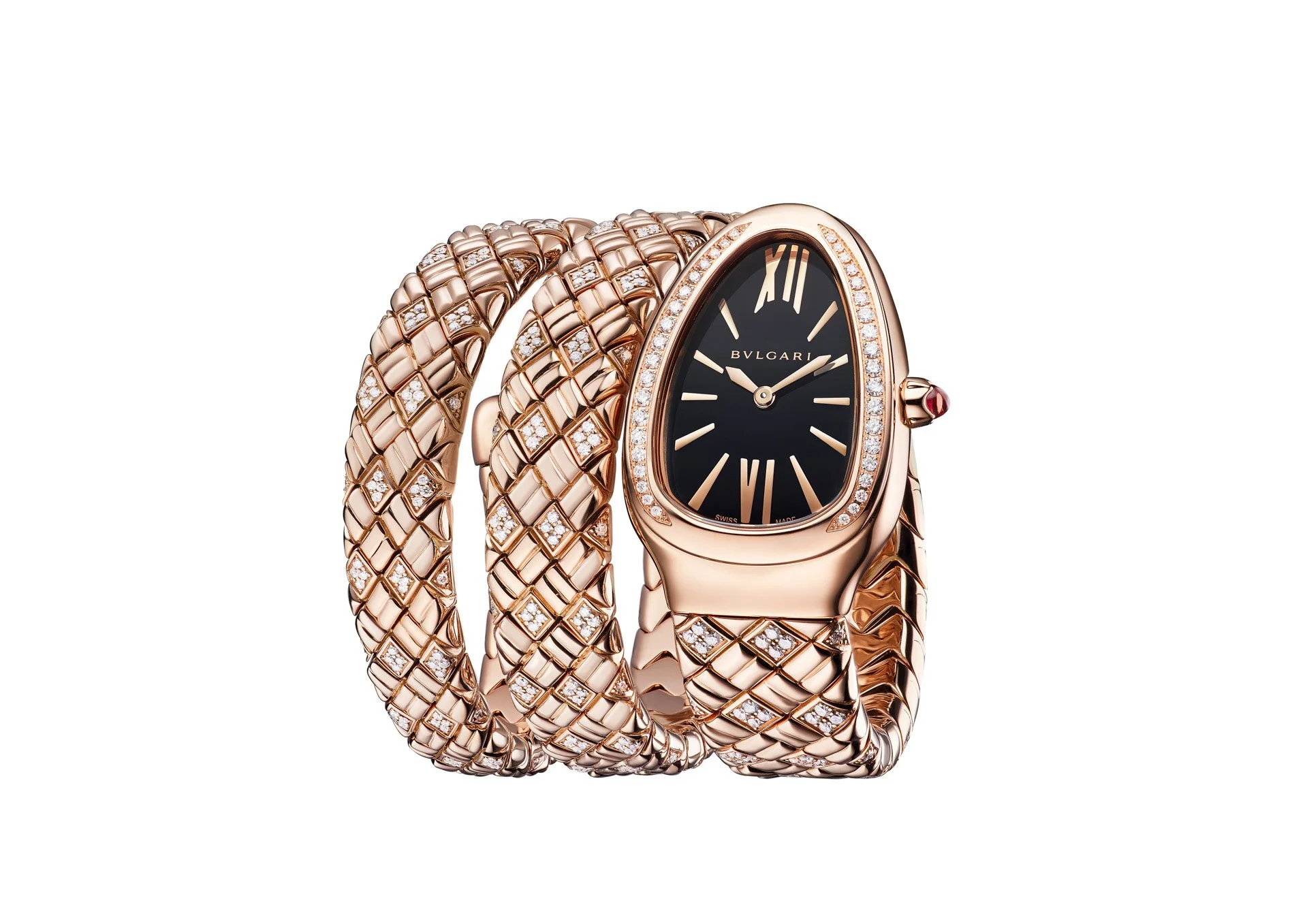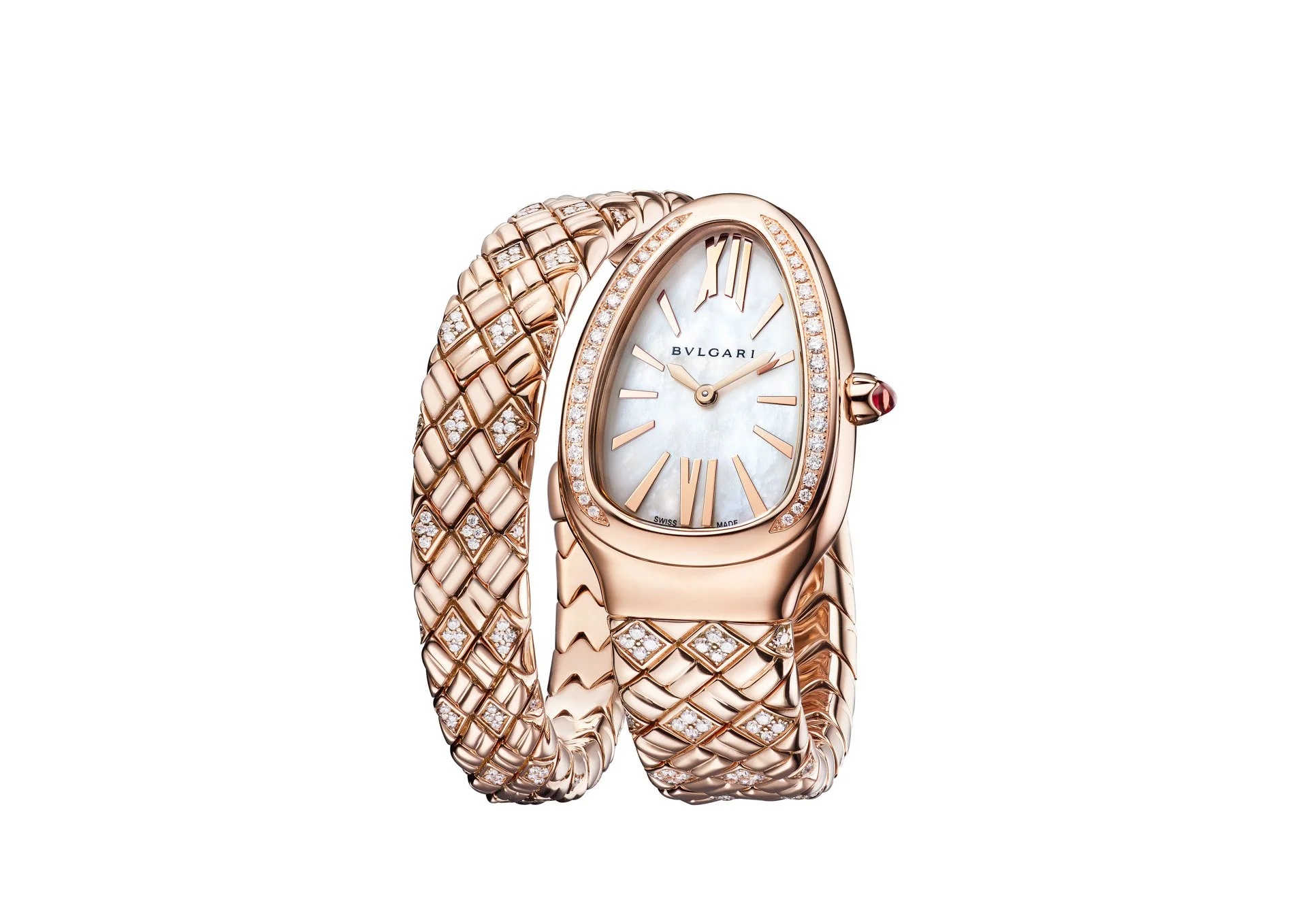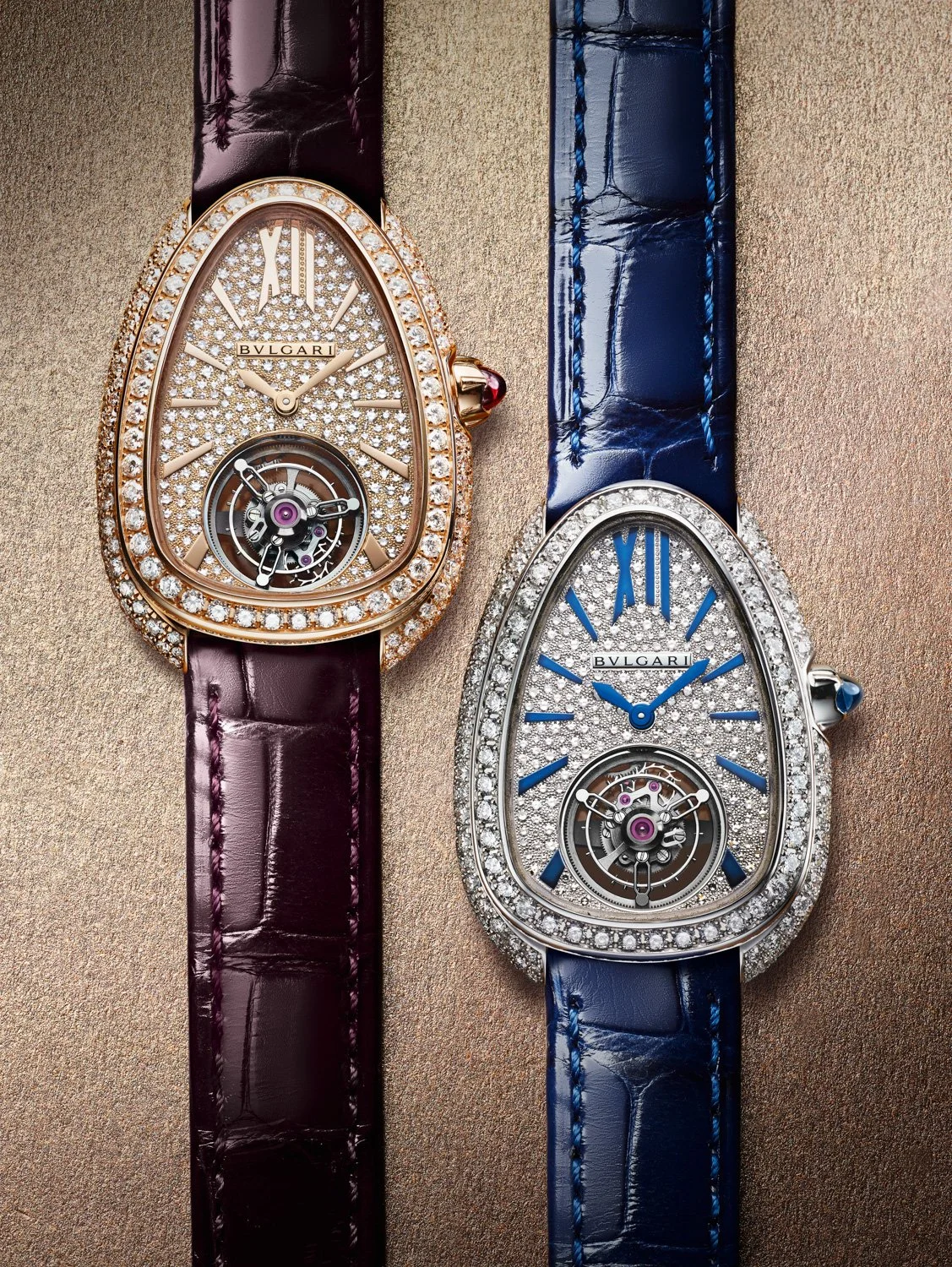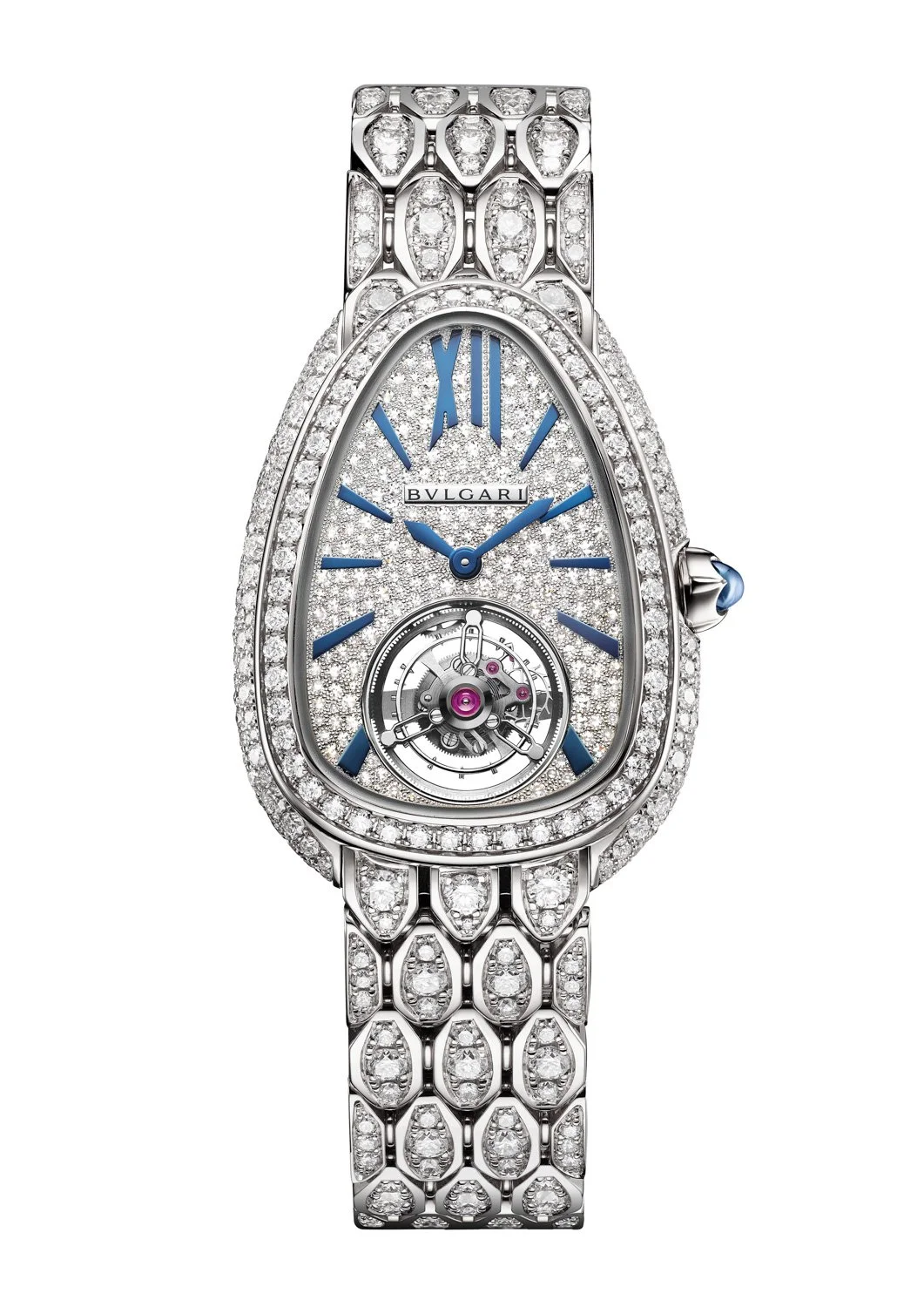The Bulgari Serpenti Odyssey
The story of this iconic symbol of power and seduction has been shaped through its history. From fashion accessory to Collector’s item, the Bulgari reptile has constantly evolved since its creation.
“For me calling at Bulgari’s shop is like visiting the best exhibition of contemporary art”
Andy Warhol
The serpent has been one of the most emblematic symbols of Bulgari. It is a powerful symbol of wisdom, eternity from Egyptian and Chinese culture to Greek mythology and Roman civilization.
While Actress Elizabeth Taylor is known to be the most famous fan of snake jewellery throughout history, Queen Victoria received a snake ring as an engagement ring from Prince Albert. The symbol of their eternal love, it was the the start of a Victorian trend in snake-themed adornments.
The snake also refers to the heritage of Greek founder Sotirios Georgis Boulgaris who then moved to Rome in his early 20s to settle there at the end of the nineteenth century.
From Silversmith to Bulgari, The Jeweler
Bulgari was known for silver pieces that borrowed elements from Byzantine and Islamic art, combining them with floral motifs. Having latched onto jewelry style trends emanating from Paris, Bulgari continued to follow the lead of what was then the world’s jewelry capital throughout the first half of the century.
When Sotirio passed away in 1932, his two sons, Giorgio and Costantino—who each had a keen interest in precious stones and jewels—took over the business. The brothers undertook an extravagant remodeling of both the interior and the exterior of the Via Condotti store and formally changed the company logo to “BVLGARI,” an application of the traditional Roman alphabet.
The Serpenti Key Dates
1940-1950
The origin of the first Serpenti bracelet watches is closely linked to Bulgari Tubogas technique.
In the early 1940s, the highly stylized snake motif began to appear, realized in the signature Tubogas fashion or as a gold mesh style that wrapped around the wrist. The case and dial were square or rectangular evoking the head of the serpent. In the 1950s, the sleek design was embellished with rubies, emeralds and diamonds.
1960-1970
1961. The iconic Serpenti Tubogas gold and platinum bracelet watch with emerald and diamond was formerly in the collection of Elizabeth Taylor.
During the golden age of La Cinecitta, Bulgari historical flagship in Via dei Condotti in Rome hosted Elizabeth Taylor and Richard Burton who came to the shop and mingled with the Bulgari family.
In 1962, on the set of the movie Cleopatra filmed in Rome, splendid Elizabeth Taylor wore pieces from her legendary jewelry collection. With the legend around the jewels, particularly about the mystery of who bought the Bulgari pieces for the Oscar-winning actress, the Italian house became extremely famous with this iconic one-of-a-kind snake bracelets.
In 1965. Bulgari launched the Serpenti gold bracelet-watch with polychrome enamel, or with jades, diamonds, coral, onyx. Vogue Editor Diana Vreeland adored them wearing a colorful white and pink enamel Serpenti necklace as a belt or wrapped around her neck. «Don’t forget the serpent. The serpent should be on every finger and all wrists and all everywhere » Diana Vreeland.
The color became a distinctive creative characteristic for the brand. “To me, the enamel snakes exemplify the Dolce Vita era in Rome” Nicola Bulgari.
1970-1980
There was a revival of the Tobogas flexible body with geometric dial. The Serpenti bracelet-watches are made of gold, or three color gold.
2009
Bulgari celebrates its 125th anniversary. The prestigious Palazzo delle Esposizioni in Rome hosted a first retrospective of the brand’s history.
Serpenti watches returned to the spotlight with a boldly innovative style. Bulgari introduced the Serpenti Scaglie Collection. A synthesis of the snake sinuous form and the simple elegance of the geometric abstraction.
2014
Serpenti Spiga collection was introduced. Rooted in Bulgari’s Heritage and first brought to life in Bulgari jewels in 1990s, the Spiga pattern inspired a new collection of Serpenti watches, the unique shape evokes a stalk of wheat - symbol of fertility and prosperity, referring to marriage in ancient Rome and Greece.
2019
The brand launched Serpenti Seduttori « born to be gold » collection. The latest incarnation of Bulgari’s most recognizable cult watch Serpenti.
A collector’s item
In 2019, Sotheby’s Geneva sold a Serpenti necklace for US$ 341,000 - one of the top prices for a Serpenti jewels in recent years.
“The most sought and researched Serpenti by the collectors are obviously those which are not made anymore, dating back from the 50s and 60s” said Claire Mestrallet, Associate Director at Auction house Adam’s in Dublin.
On June 9, 2021, a gold, enamel and diamond Serpenti Bracelet-Watch dating from the mid-1940s to early ‘50s was sold for USD 138’600 at Sotheby’s New York.







